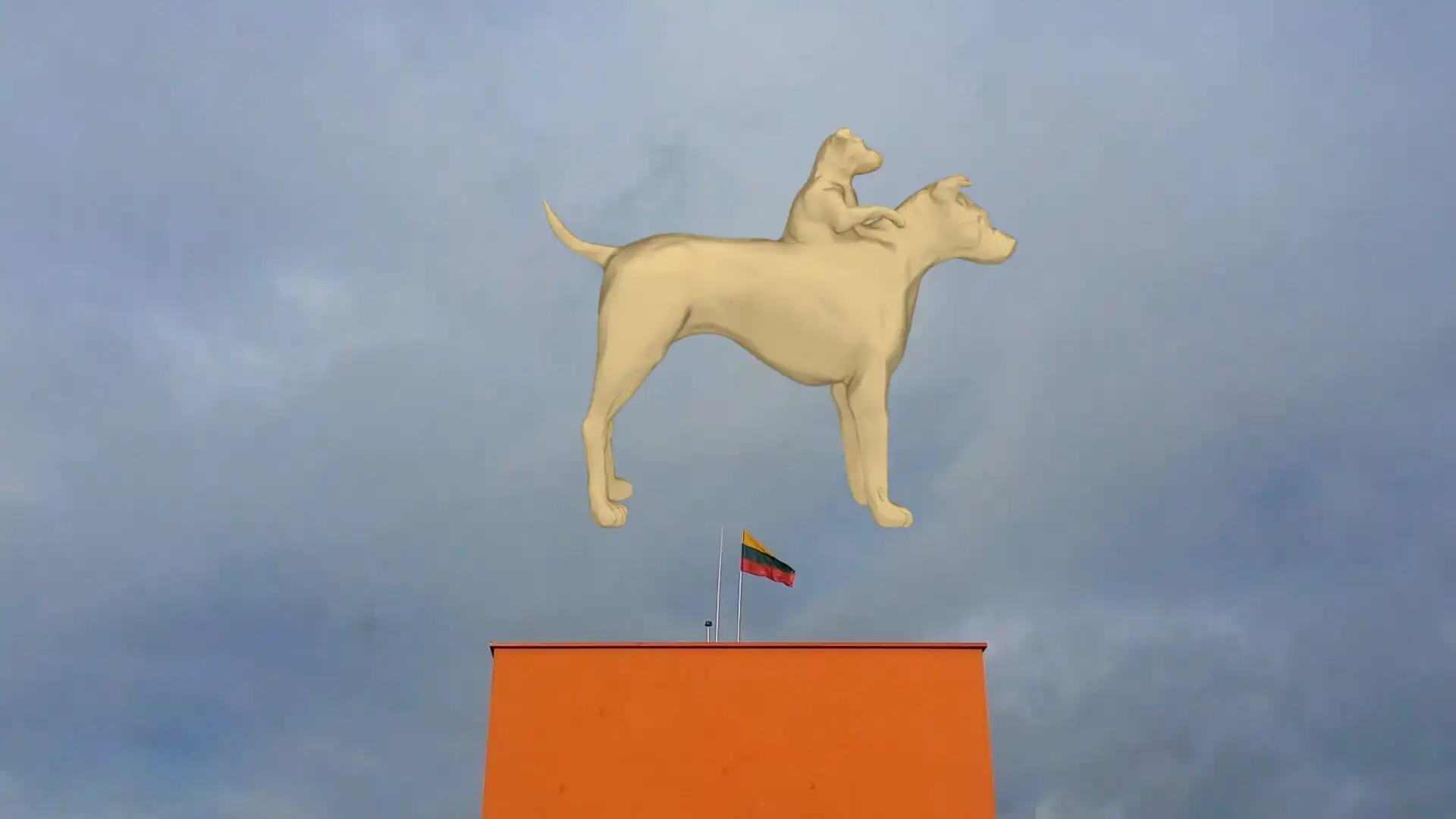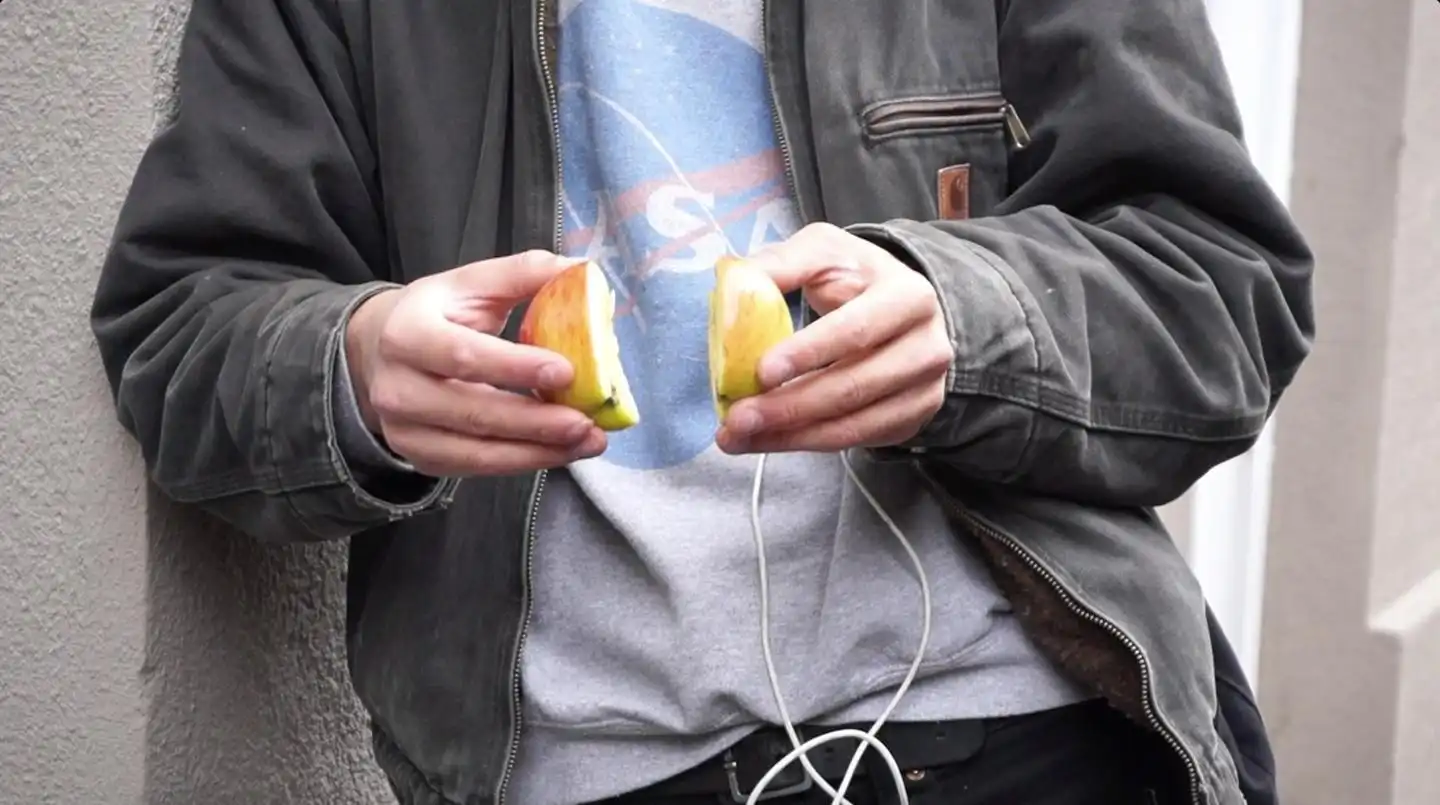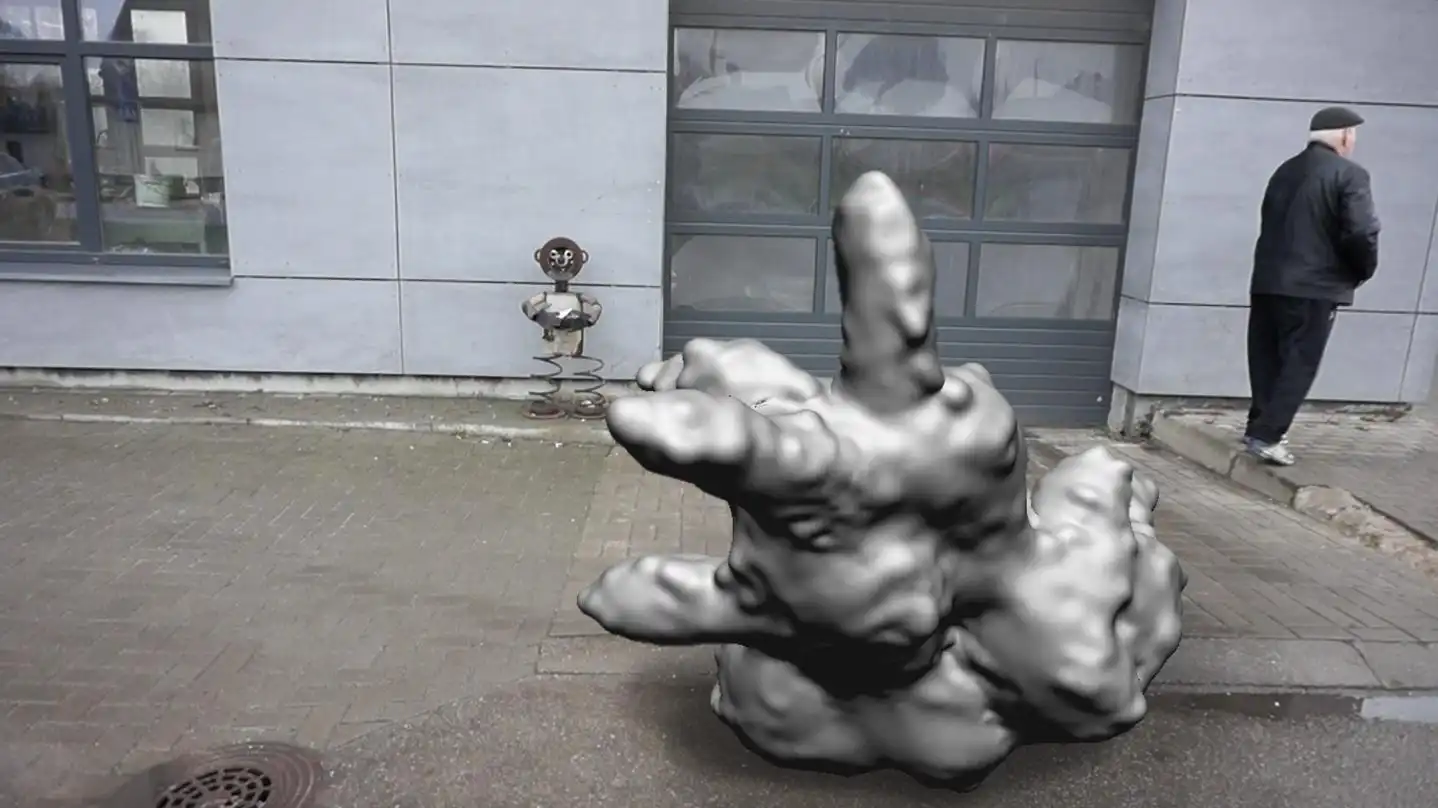- Title
- Demikhov Dog
- Artist
- Anastasia Sosunova
- Date
- 2017
- Country
- Lithuania
- Credits
- Commissioned by Rupert, Vilnius for a screening curated by Adomas Narkevičius at Ignalina Culture and Sport Center. Courtesy of the artist and National Gallery of Art, Vilnius.
- Curated by
- The curatorial team of the Contemporary Art Centre, Vilnius.
- Technical details
- Video, sound, 7:23 min.
Description
Demikhov’s dogs were the result of experiments conducted by the Soviet scientist Vladimir Demikhov, who carried out the world’s first head transplant operations in 1954. During the course of these experiments, two-headed dogs – able to survive for a short period – were created.
In the video, Sosunova uses these experiments as a conceit through which to discuss experiences of cultural difference and the rifts of identity that riddle the region in which she was raised. Reflecting on her own experience of growing up in a Russian family on Lithuania’s periphery, she works through the ubiquitous possibility of growing up as a foreigner in your own country. The footage used in the work was sourced from across the Baltic region, and is combined with fictitious characters, chimeric animated realities and not quite Lithuanian stories.
Artist(s) Statement
I always found myself in a somewhat muddled position between two or more contradicting sides: of political powers, languages, identities and belief systems. A chimera, or a Demikhov dog – a body with two heads in a constant internal debate. For this reason, to me, the freedom of expression starts with acknowledging the presence of this multiplicity of voices inside, but also in the body of society as well, and speaking up against the ingrained patterns of patriarchy, homophobia, racism and nationalism.



Anastasia Sosunova’s video work Demikhov Dog was selected through research undertaken by the curatorial team of the Contemporary Art Centre, Vilnius in consultation with other curators working in the field. The protagonist of the film utters in Lithuanian with a distinct Russian accent ‘the Demikhov dog is the inconsistency of this world’ and today these words resonate in a much wider context, beyond questions of nationality and identity. Through the metaphor of a two-headed dog the work opens up a much broader space to think about coexistence and our responsibility towards each other and our surroundings, which is as urgent today as ever. It also, perhaps indirectly, gives hope that if we can see and acknowledge this, we can also embody it.